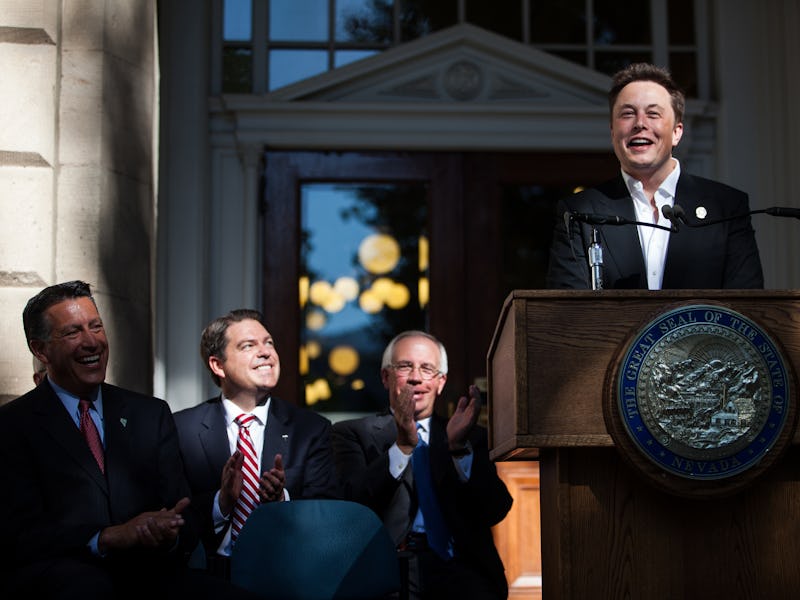Tesla Says Its Massive Gigafactory is Now Operational
The batteries for the Model 3 are going to cost less, too.

Tesla has started producing batteries in its massive but energy-efficient Gigafactory, allowing the company to take a step forward in mass-producing electric vehicles.
These lithium-ion batteries, called the “2170 cell” and designed by Tesla and Panasonic, will be used for Tesla’s energy Powerwall 2 and Powerpack 2 energy products, as well as the Model 3, Tesla’s affordable ($35,000 base) car that’s expected to see a release this year.
On Wednesday, a Tesla announcement described the Gigafactory becoming operational as a way to “accelerate the world’s transition to sustainable energy.” Since Tesla plans to produce half a million cars a year, it will need to efficiently produce lithium ion batteries.
And although the factory is expected to be “the biggest building in the world,” its carbon footprint is not nearly as large. Currently, the factory houses 4.9 million square feet of space across several floors, but it only has a carbon footprint of 1.9 million square feet, as it is powered by renewable energy sources.
Tesla CEO Elon Musk has a vision of transforming Tesla into a clean energy company in the long run and aims to achieve net-zero energy in the future. He has also called the Gigafactory the “machine that builds the machine.” The Gigafactory runs on more efficient energy sources and it will create jobs. Tesla expects the factory to employ 6,500 people and indirectly create an estimated 20,000 to 30,000 jobs in nearby regions.
Tesla's Gigafactory from the air. On Wednesday, the company announced it had started producing batteries to go in Tesla's electric cars.
Musk has been known to set ambitious goals that often fall short. On Tuesday, Tesla announced it delivered fewer than its target of 80,000 vehicles in 2016. This led shares to drop more than 2 percent in after-hours trading. However, he has been able to deliver on his goal of starting battery production, which is promising.
Manufacturing has begun inside the Gigafactory outside Sparks, Nevada, although it is only 30 percent finished. This is because the Gigafactory is built in phases, allowing manufacturing to start immediately and for the company to continuously improve techniques to cut down on energy use.
Batteries for the coming Tesla Model 3 will be produced at the Gigafactory.
According to Tesla, the Gigafactory — which had its grand opening in late July — will reach full capacity by 2018 and produce nearly as many battery cells as the rest of the world’s battery production combined.
“It has to be big, because the world is big,” said Musk, during his grand opening remarks. “What you’re seeing here is only 14 percent… it’s only one-seventh of what the factory will be.”
And if you might want to own a Tesla in the future, there’s good news. Tesla says the cost of battery cells will decline due to an increasingly better process designed to produce batteries and reducing waste. The company expects to drive down the per kilowatt hour cost of its battery pack by over 30 percent. This allows Tesla’s products to be available to more people.
Expectedly, Musk and Tesla aren’t stopping with just one Gigafactory. The Gigafactory 2 will likely be in Europe.